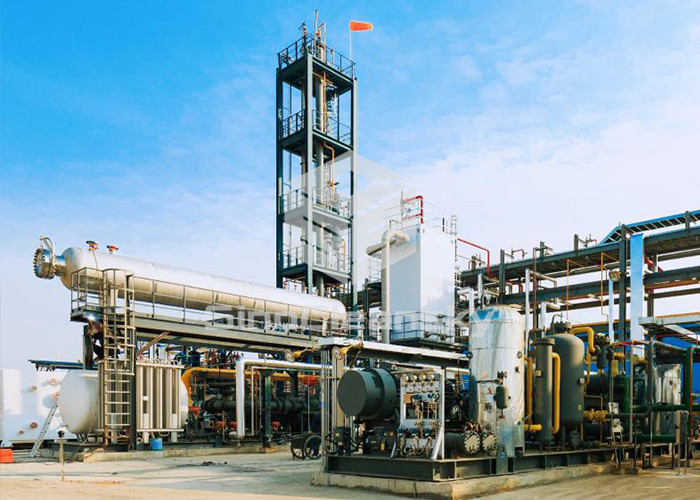
In recent years, the energy industry has seen a significant shift towards more sustainable and environmentally friendly solutions. One of the emerging technologies that is revolutionizing the way we think about energy production is Small Scale LNG Plants. These plants provide a more flexible and cost-effective alternative to traditional large-scale LNG facilities, making liquefied natural gas (LNG) more accessible to a wider range of industries and applications. You can also click over here to explore more about small scale LNG plant.
The Advantages of Small Scale LNG Plants
Flexibility
- Small Scale LNG Plants can be easily deployed in remote locations or areas with limited infrastructure.
- They offer a modular design, allowing for scalability and the ability to increase capacity as needed.
Cost-Effectiveness
- These plants have lower capital costs compared to traditional large-scale facilities, making them more attractive to smaller companies or regions with limited budgets.
- Operating costs are also reduced due to their smaller size and simpler infrastructure requirements.
Environmental Benefits
- Small Scale LNG Plants produce lower emissions compared to traditional energy sources, helping to reduce the carbon footprint of industries that utilize LNG.
- They can also be powered by renewable energy sources, further enhancing their environmental credentials.
Applications of Small Scale LNG Plants
Transportation
- Small Scale LNG Plants are increasingly being used to fuel ships, buses, and trucks, providing a cleaner alternative to diesel and other fossil fuels.
- They can also be deployed at refueling stations along transportation routes, creating a more sustainable infrastructure for LNG-powered vehicles.
Remote Power Generation
- In off-grid or remote areas where access to traditional power sources is limited, Small Scale LNG Plants can provide a reliable and cost-effective solution for electricity generation.
- These plants can be combined with renewable energy sources such as solar or wind to create hybrid power systems that are both efficient and environmentally friendly.
Industrial Applications
- Small Scale LNG Plants are well-suited for industrial applications that require a constant and reliable source of energy, such as manufacturing plants or chemical facilities.
- They can also be used to power boilers, heating systems, and other thermal applications, helping industries reduce their reliance on more polluting fuels.
Challenges and Future Outlook
Infrastructure
- One of the challenges facing the widespread adoption of Small Scale LNG Plants is the lack of infrastructure for storage and distribution in many regions.
- Investments in infrastructure development will be crucial to supporting the growth of this technology and expanding its reach to new markets.
Regulatory Hurdles
- Regulatory frameworks governing the production and distribution of LNG can vary between countries, posing a barrier to the development of Small Scale LNG Plants on a global scale.
- Harmonizing regulations and promoting standardization will be essential for the continued expansion of this technology.
Technological Innovation
- Ongoing research and development efforts are focused on improving the efficiency and performance of Small Scale LNG Plants, as well as exploring new applications and uses for LNG.
- Technological advancements in areas such as liquefaction processes and cryogenic storage are expected to drive further innovation in this field.
Conclusion
Small Scale LNG Plants represent a promising solution for meeting the growing energy demands of industries and communities around the world. With their flexibility, cost-effectiveness, and environmental benefits, these plants are reshaping the future of energy production and consumption. Overcoming current challenges and continuing to drive technological innovation will be key to unlocking the full potential of Small Scale LNG Plants and realizing their role in a more sustainable energy landscape.
